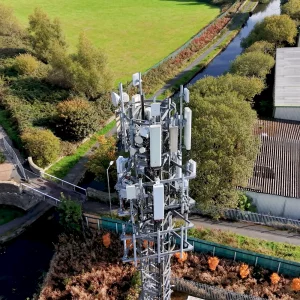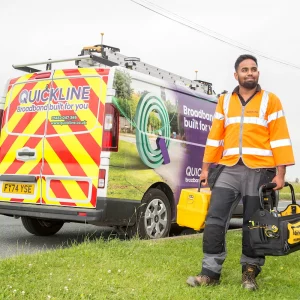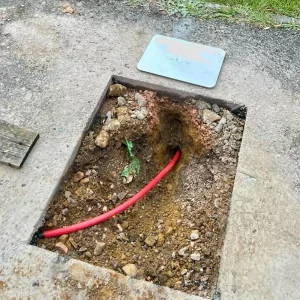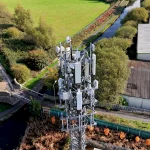ISP Star UK Attacks Governments 2Mbps Broadband Commitment - Interview
 David Palmer, the Senior Product Manager for Networks and Connectivity at Star, a business ISP for managed services, has hit out at the UK governments Universal Service Commitment (USC) to deliver a minimum broadband speed of 2Mbps to everybody in the country by 2012. Palmer feels that 2Mbps is, even by today’s standard, already too slow and believes that alternatives must be explored lest we lapse into an even bigger digital divide between urban and rural areas.
David Palmer, the Senior Product Manager for Networks and Connectivity at Star, a business ISP for managed services, has hit out at the UK governments Universal Service Commitment (USC) to deliver a minimum broadband speed of 2Mbps to everybody in the country by 2012. Palmer feels that 2Mbps is, even by today’s standard, already too slow and believes that alternatives must be explored lest we lapse into an even bigger digital divide between urban and rural areas."We are seeing a growing trend of UK businesses using Cloud computing and On-demand services and the primary enabler for this is higher bandwidth. Cloud computing would simply not be practical on ADSL speeds of sub-2Mb due to large file sizes and the general working speed of applications over this bandwidth.
Fast Broadband opens up a new era of possibilities with business applications now being hosted in data centres instead of being managed in-house and on a company’s own computers."
Palmer spoke exclusively to ISPreview.co.uk ahead of a special industry event on in London, which will be held by Broadband Delivery UK (BDUK); a vehicle for the governments broadband policies and funding. The event is aimed at organisations with broadband delivery capacity who may be interested in bidding for subsidies/contracts that could be granted in connection with deploying the USC or "superfast" broadband.
1. You believe that the governments minimum broadband speed of 2Mbps could be achieved over "existing infrastructure" in rural areas, could you elaborate on this? BT's Broadband Enabling Technology (BET), which is one such solution, has already been scalded by ISP's around the country because it is far too expensive. Without ISP support BET cannot and will not work (UK ISPs Shun Expensive bt 2Mbps Rural Broadband Solution).
Palmer ANSWER: BET is very expensive yes, I agree as I was at the BT Forum, however, I believe it is currently the only real option the government have in achieving 2Mb without significant investment in rural networks which in the current climate is very unlikely. One option the government have is to subsidise BET to achieve their 2Mb goal rather than the ISPs or the customer picking up the bill.
2. So a minimum of 2Mbps is too slow, most industry observers would agree with you there, but what kind of speed do you think the government's Universal Service Commitment (USC) should aim to deliver?
Palmer ANSWER: Whatever bandwidth is aimed for will over time become too slow however the target they are setting is already considered slow by today’s standards. None of our customers buy 2Mb services by choice anymore, to aim for 8Mb or greater would be better however the budget just is not there in the timescales set to deliver that. Maybe another option would have been to extend the timescales for a slower rollout of fibre or alternative solution?
3. You say that the whole network is "very unlikely" to be replaced by fibre optic broadband in rural areas, or indeed in many urban locations too. What alternatives could such communities use? For example, Satellite solutions are costly and very restrictive for what you pay, while the terrain topography doesn't always work in favour of other Wi-Fi and WiMAX wireless methods. Mobile Broadband might work but continued delays to related auctions and spectrum re-farming are holding it back, not to mention the capacity constraints of existing operators.
Palmer ANSWER: I feel there needs to be a mixed approach to providing higher bandwidth to rural areas which is a mixture of Wi-Fi, WiMax and Mobile. In certain areas it will be the only way to achieve higher bandwidths. Some specialised Wi-Fi providers are focusing on these areas and providing very good solutions however it is probably the mobile operators who currently have the greatest coverage. Mobile Broadband could be the best solution once the issues mentioned above are resolved.
4. The critical connectivity issues of latency (needed for VoIP, VPN, Multiplayer gaming etc.), upload speed and affordability appear to have been completely overlooked by the USC. What are your thoughts on this?
Palmer ANSWER: I think the issues of latency has not necessarily been overlooked but excluded. This again adds another layer of complexity into the mix when rolling out a service but with the move to converged networks and Cloud computing services this becomes critical. As a business provider we experience issues now in trying to provide data and VoIP services over Broadband to rural home workers. Bandwidth is only half the solution.
5. Given the problems and limited timescale, do you think that the government can still achieve its 2012 target?
Palmer ANSWER: In the current climate of cost cutting, BTs FTTC rollout and the resource committed to that, I feel the 2012 target will be a real stretch.The governments (BDUK) industry event will be held on 15th July next week and it will hopefully be attended by a vocal and significant swathe of infrastructure developers and key broadband ISPs.








Latest UK ISP News
Helpful ISP Guides and Tips
- FTTP (6717)
- BT (3862)
- Politics (3033)
- Business (2733)
- Openreach (2628)
- Building Digital UK (2486)
- Mobile Broadband (2434)
- FTTC (2132)
- Statistics (2100)
- 4G (2062)
- Virgin Media (1997)
- Ofcom Regulation (1761)
- 5G (1692)
- Fibre Optic (1586)
- Wireless Internet (1581)































